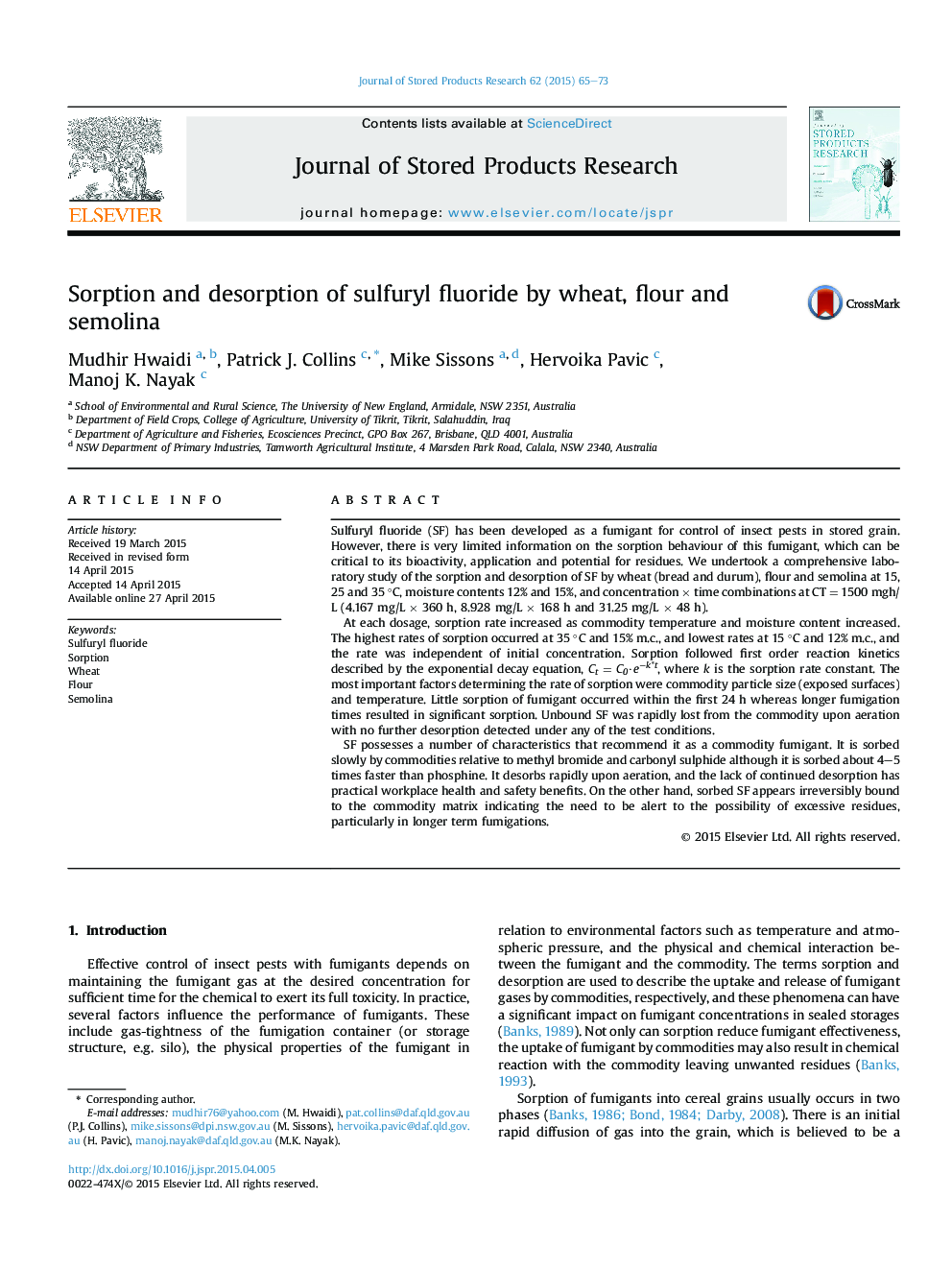| کد مقاله | کد نشریه | سال انتشار | مقاله انگلیسی | نسخه تمام متن |
|---|---|---|---|---|
| 4517052 | 1624926 | 2015 | 9 صفحه PDF | دانلود رایگان |
• Sorption into wheat, semolina and flour closely follows exponential model Ct = C0 ·e−kt.
• Sorption increases as temperature and/or moisture content increases, and as particle size decreases.
• Initial concentration of SF does not affect rate of sorption.
• Unbound SF is rapidly removed with aeration. No further de-sorption detected.
• SF sorbs at lower rate than methyl bromide, carbonyl sulphide, ethyl formate but more rapidly than phosphine.
Sulfuryl fluoride (SF) has been developed as a fumigant for control of insect pests in stored grain. However, there is very limited information on the sorption behaviour of this fumigant, which can be critical to its bioactivity, application and potential for residues. We undertook a comprehensive laboratory study of the sorption and desorption of SF by wheat (bread and durum), flour and semolina at 15, 25 and 35 °C, moisture contents 12% and 15%, and concentration × time combinations at CT = 1500 mgh/L (4.167 mg/L × 360 h, 8.928 mg/L × 168 h and 31.25 mg/L × 48 h).At each dosage, sorption rate increased as commodity temperature and moisture content increased. The highest rates of sorption occurred at 35 °C and 15% m.c., and lowest rates at 15 °C and 12% m.c., and the rate was independent of initial concentration. Sorption followed first order reaction kinetics described by the exponential decay equation, Ct = C0·e−k*t, where k is the sorption rate constant. The most important factors determining the rate of sorption were commodity particle size (exposed surfaces) and temperature. Little sorption of fumigant occurred within the first 24 h whereas longer fumigation times resulted in significant sorption. Unbound SF was rapidly lost from the commodity upon aeration with no further desorption detected under any of the test conditions.SF possesses a number of characteristics that recommend it as a commodity fumigant. It is sorbed slowly by commodities relative to methyl bromide and carbonyl sulphide although it is sorbed about 4–5 times faster than phosphine. It desorbs rapidly upon aeration, and the lack of continued desorption has practical workplace health and safety benefits. On the other hand, sorbed SF appears irreversibly bound to the commodity matrix indicating the need to be alert to the possibility of excessive residues, particularly in longer term fumigations.
Figure optionsDownload as PowerPoint slide
Journal: Journal of Stored Products Research - Volume 62, May 2015, Pages 65–73
